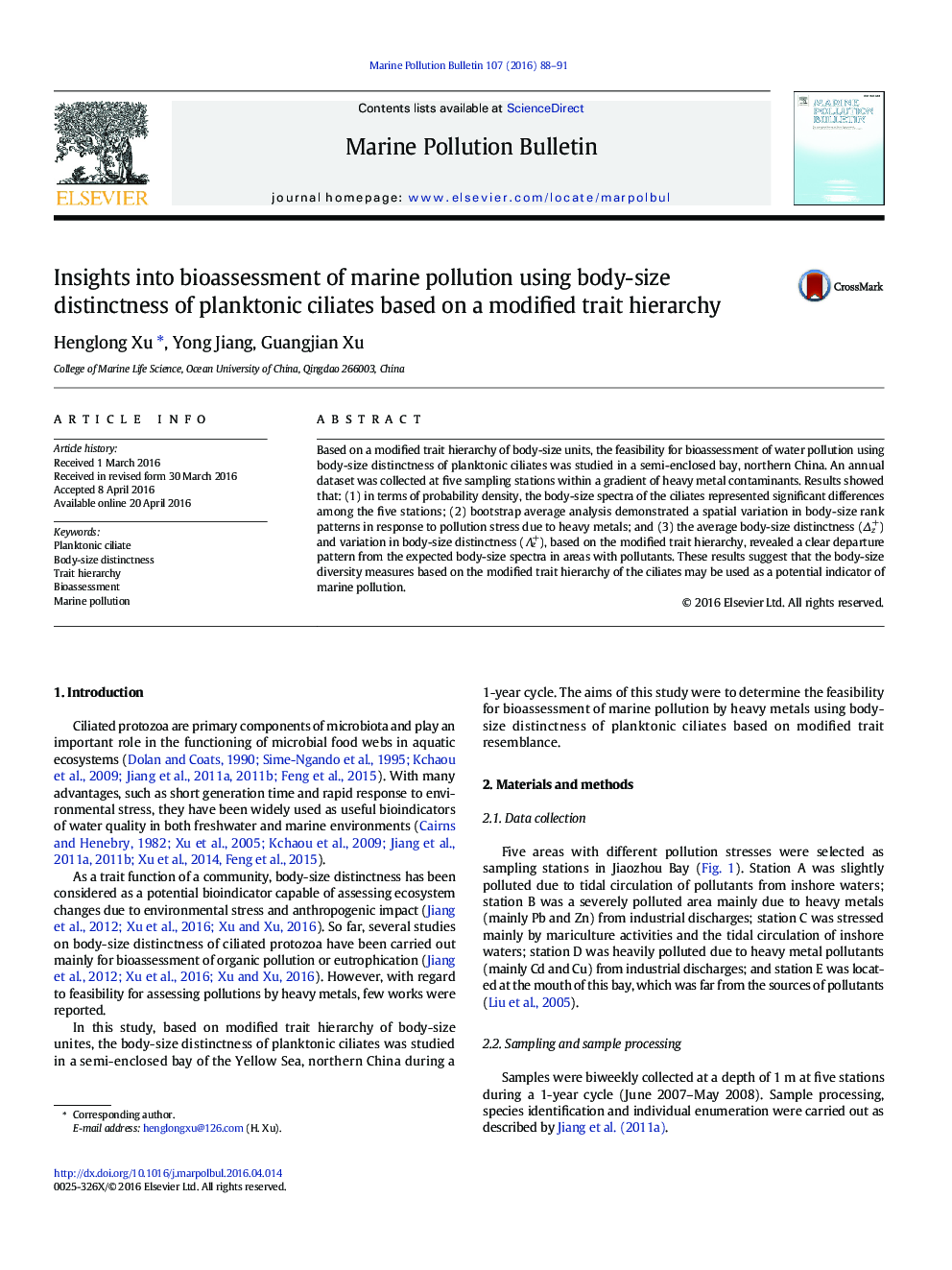| Article ID | Journal | Published Year | Pages | File Type |
|---|---|---|---|---|
| 6356164 | Marine Pollution Bulletin | 2016 | 4 Pages |
Abstract
Based on a modified trait hierarchy of body-size units, the feasibility for bioassessment of water pollution using body-size distinctness of planktonic ciliates was studied in a semi-enclosed bay, northern China. An annual dataset was collected at five sampling stations within a gradient of heavy metal contaminants. Results showed that: (1) in terms of probability density, the body-size spectra of the ciliates represented significant differences among the five stations; (2) bootstrap average analysis demonstrated a spatial variation in body-size rank patterns in response to pollution stress due to heavy metals; and (3) the average body-size distinctness (Îz+) and variation in body-size distinctness (Îz+), based on the modified trait hierarchy, revealed a clear departure pattern from the expected body-size spectra in areas with pollutants. These results suggest that the body-size diversity measures based on the modified trait hierarchy of the ciliates may be used as a potential indicator of marine pollution.
Related Topics
Physical Sciences and Engineering
Earth and Planetary Sciences
Oceanography
Authors
Henglong Xu, Yong Jiang, Guangjian Xu,
